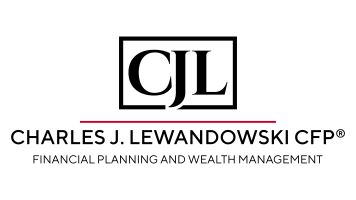Sole Proprietor? Three Reasons You Should Consider a Solo 401(k)
Transcript:
Hello, everyone. I’d like to talk to you about my friend. Roger. Roger is an elite 50 year old triathlete. I don’t think I’ve met many people as determined as Roger. He has used the same triathlete mindset
to become a successful real estate investor.
(00:15):
He earns income as a property manager, in addition to some rental income, and gains on real estate sales. His business has been so lucrative that he is in one of the highest tax brackets. Following a depressing conversation with his tax accountant, Roger wondered how he can significantly reduce his tax bill. Was there a retirement savings plan built for him? Roger would be happy to know that there were a couple of tax saving options for self-employed business owners.
(00:43):
I’m Chuck Lewandowski CERTIFIED FINANCIAL PLANNER ™ professional and today I’m going to discuss one type of plan that helped Roger meet his tax savings goal, the solo 401k. A solo 401k, sometimes known as a unit K, a solo K, or one participant K is a retirement account designed specifically for sole proprietors and their spouses. If the business owner has any employees beyond his or her spouse, they are not eligible. A Solo 401k plan is structured similarly to a traditional large company 401k with identical contribution limits. However, plan documents are simplified, fees may be much less, and the plan is not subject to many ERISA rules. The plan must be established prior to December 31st of the year in which you wish to make contributions. Here are three reasons Roger should consider the solo 401k.
(01:37):
Number one, the solo 401k has high contribution limits. Roger has earned income due to his property management work, so he’s eligible for a tax deferred retirement plan. If he only had rental income or capital gains, he would not be eligible. Roger can make salary deferral contributions, and he can add a profit sharing contribution as well. Roger’s also over age 50, so he can make an additional catch-up contribution depending on his income. These three contributions can total up to $64,500. In 2021. Qualified distributions are taxed as income in the year they’re withdrawn, and taxes and penalties may apply in distributions before age 59 ½.
Two, he can contribute to a Roth account. In many cases, high income individuals cannot contribute to a Roth. This is not the case with a solo 401k. If Roger wishes to diversify the tax type of his contributions, he can establish a Roth account within a Solo 401k.
(02:34):
This will allow him to contribute to an after-tax account that would not be subject to taxation. Once he’s eligible to make withdrawals again, taxes and penalties may apply when distributions are made before age 59 ½.
Three, he can add a loan provision. Due to the cyclical nature of his real estate business, Roger is concerned about uneven cash flow and the need for liquidity. Although some advisors do not recommend this, he can include a loan provision within this plan document to allow him to borrow some of his solo 401k balance if the need arises subject to certain limitations. He would then make payments back to his plan with interest.
The self-employed have several options to contribute and grow the retirement savings. The solo 401k allows for significant contributions and potential tax advantages. To properly choose the appropriate option for you, be like Roger and find a coach to help determine the right plan. I would be happy to be your coach. Please call me and let’s make a plan.
